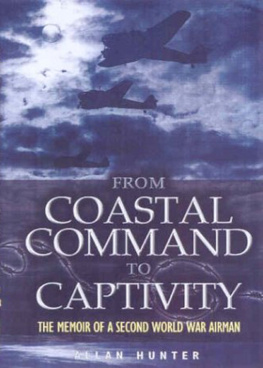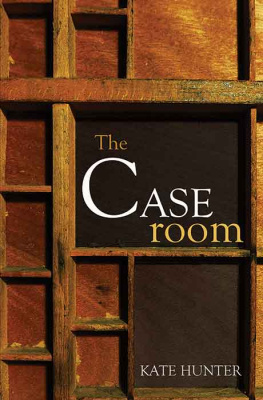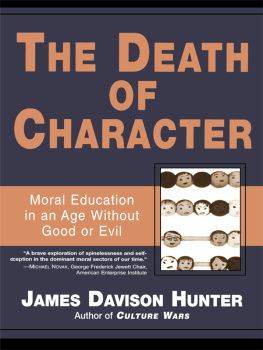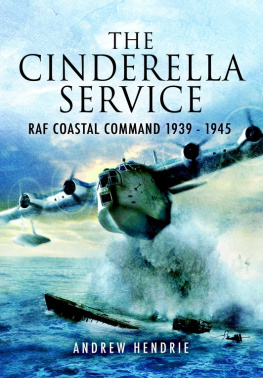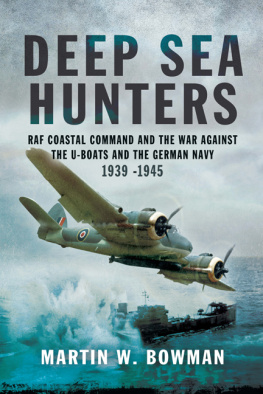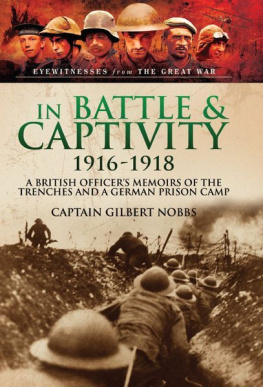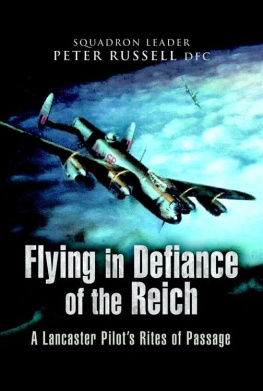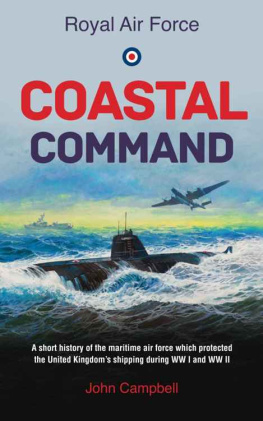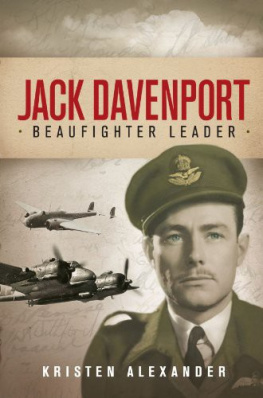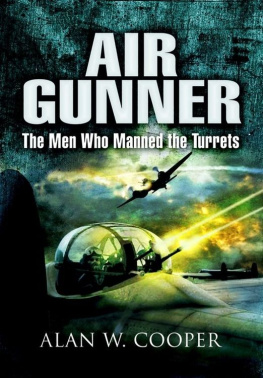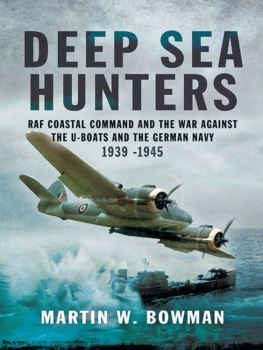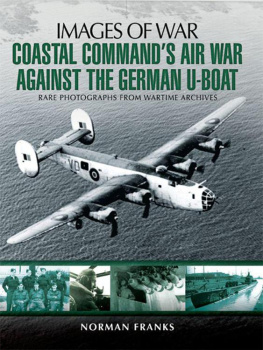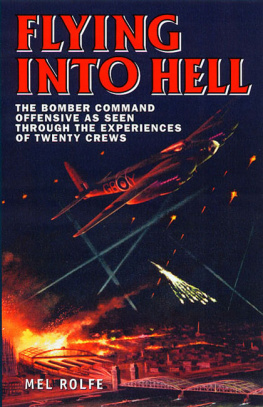
First published in Great Britain in 2003 by
LEO COOPER
an imprint of Pen & Sword Books,
47 Church Street,
Barnsley
South Yorkshire,
S70 2AS
Copyright 2003 by Dr Allan Hunter
ISBN 0 85052 991 3
ISBN 9781844682225 (epub)
ISBN 9781844682232 (prc)
A catalogue record for this book is
available from the British Library.
Typeset in Sabon by
Phoenix Typesetting, Burley-in-Wharfedale, West Yorkshire.
Printed in England by
CPI UK
Contents
Acknowledgements
Jim Hunter did not write an acknowledgements section before he died, and so if anyone has been missed out I can only apologize, and offer the assurance that the omission is in no way intentional.
The largest debt is, of course, to Elsa Hunter, Jim's widow, who encouraged his writing while he was alive and was generously supportive of this book project throughout. Of those who contributed photographs, information, anecdotes and moral support I would mention above all Jim's sister Mrs. Betty Moorley, and of course Mrs. Iris Simmons. Jim would surely have wanted to acknowledge Roy Conyers Nesbit as well as his friends from the 217 Squadron reunions, who advised and shared ideas as to how he could best shape his narrative. Sadly, the reunions are more sparsely attended with the depredations of each passing year.
Research assistance was generously provided by the Imperial War Museum, The RAF Museum Hendon, and the Air Historical Branch. In the USA I was materially assisted by the generosity and dedication of the staff of Curry College Library. I am also grateful for a grant from the Faculty Welfare Committee and for support from Dean David Fedo, which helped this project to completion. Joan Manchester was a miracle of quiet efficiency in preparing the electronic format. Tom Hartman was the perfect editor in every way, and Henry Wilson's kindness and professionalism was a pleasure and a reassurance at every stage. To Catherine Bennett I owe my gratitude for her critical acumen, understanding, and support. She also produced the excellent maps of the forced marches and corrected and redrew Robert Buckham's diagram of Marlag Nord.
The final acknowledgement must go to the International Red Cross who, as Jim said, Kept us kriegies alive through those years.
Introduction
In the grey pre-dawn light of 25 July 1941 six Bristol Beaufort Is of 217 Squadron warmed up on the airfield at RAF St. Eval in Cornwall. At 5:30 am, weighed down with bulky landmines that stuck out beyond their bomb doors, they rumbled down the runway one by one and clambered into the sky. The crews scanned the horizon with some anxiety. It promised to be a clear day and they needed cloud cover for what they had ahead of them. They were due to rendezvous with torpedo-carrying Beauforts from 22 Squadron their orders to find and attack the battleship Scharnhorst, surely one of the most dangerous ships on the sea at that time. She was a foe they had faced before. Two nights earlier 217 Squadron Beauforts had bombed her at La Pallice. Now the Scharnhorst, escorted by six destroyers, was somewhere in the Bay of Biscay, making a dash for the safety of Brest harbour with its guns and its repair facilities.
The weather quickly worsened, providing the much-wished-for cover from enemy aircraft, but in the cloud and patchy mist the force became separated and only one of the Beauforts was able to find the target. Spotting a large wake in the sea below them, they flew along it, hoping to catch their quarry unawares. In fact the cloud was so thick that it wasn't until they were directly above it that the Beaufort crew saw the huge vessel. There was no time to drop the mine. They had to go round again. It was whilst attempting a second run that the lone Beaufort ran out of cloud cover and immediately encountered a storm of flak. Within seconds the aircraft was hit several times. Moments later it struck the waves as it crash-landed, broke up and began to sink. Sergeant Pip Appleby, the W/Op (Wireless Operator), was killed and the pilot, Squadron Leader Les Collings, was wounded. My father, Pilot Officer Jim Hunter, who was the navigator, and the A/G (Air Gunner), Sergeant Ted Taylor, both suffered minor injuries.
The survivors were picked up by a German ship, and so began their nearly four years in Kriegsgefangenschaft, as prisoners of war, or kriegies as they became known.
The small Rowney watercolour book in which Jim recorded his pictures of PoW life, and which are reproduced here, sat on various shelves for over 40 years before he thought of doing anything with it. It travelled with him from prison camp to prison camp, across Germany on the forced marches away from the Russian front, then from one posting to the next throughout his career in the peacetime RAF, and when he retired at age 55 it was installed in his study. There it sat next to his Flying Log Book. Into this he had carefully pasted three small slips of paper. They were the meticulously recorded details of being shot down. He had kept these pages safe from prying German eyes throughout his captivity, just in case he ever had to explain to an RAF Board of Enquiry what had happened to the aircraft. At the top of the page he wrote, Total time on last Op 3yrs. 09 mths. 15 days 07 hrs. 27 m.
About ten years ago, in response to enquiries from the family, he began to write down his wartime experiences. To these he added many photographs taken at the time, as well as press cuttings and other pieces of memorabilia, and his PoW paintings. Jim chose to organize the material in the form of a direct narrative, almost entirely without what novelists call backstory the personal details that make up so much of life. He starts it on the day before he was shot down, using the timeline to show an average day in a Coastal Command squadron in wartime, as the airmen come together and prepare for an attack. For him the story was about the events, and what they show, not specifically about him or the minutiae of his world. He often writes about the things he and others did, or shared, and as a result this is much less a memoir of personal impressions than of shared experiences.
While this allows him to impart a huge amount of information in a compressed form it also means that certain things are left unsaid. Some of them are too important to be omitted. My purpose in writing this introduction is to fill in some of the things that were not written, but which he told me or which came from reliable sources. In this way I will attempt to provide a wider context that will help the reader understand some of the references.
The first and most obvious thing that Jim leaves out are details of his family, his background and how he joined the RAF. These matter because they shed light on an unusual aspect of the memoir that when men enlisted in 1939 and 1940 to serve their country they did so fully aware that this was a class-based society in which certain prejudices still counted. Jim was not of the class from which officers normally came. He was the oldest of the three children of William and Florence Hunter. William had been a horse trainer for the Marquess of Bute but had lost everything when a fire on board ship destroyed his stock of horses. By the time Jim was born, in 1920, William was employed as a mine surface worker at Machen, in Wales. Times were hard and the family lived with Florence's parents for several years. Then they moved to Surrey and in the 1930s managed to get a council house in Coulsdon, near Croydon. At about this time Jim won a scholarship to Caterham School, a public school well beyond the family's means.
One event that stands out from this time is that Jim invited his school friends to a birthday tea (he was probably 13), and his mother worked hard to provide delicious treats. Although his neighbourhood friends arrived promptly and in great good humour, not a single one of his school friends appeared. The boys at Caterham School were, for the most part, from wealthy homes, and in those class-conscious days their parents might not have allowed them into a council estate. If Jim was shy about writing his memoirs it may have been because he had learned early on that others would, and could, judge harshly because of prejudice.
Next page
